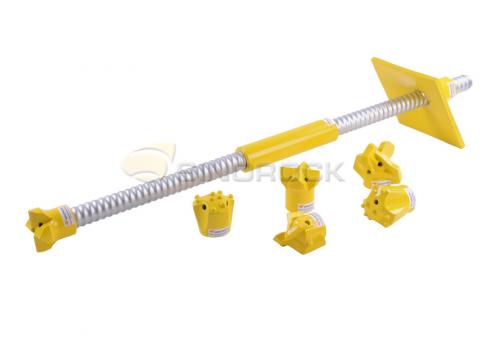Subsurface investigation activities for self-drilling anchor systems
 Subsurface investigation activities for self-drilling anchor systems typically involve soil borings and rock
coring. Figure 10 illustrates guideline recommendations for locations of subsurface borings for a
permanent anchored wall or slope. Information on the subsurface soil and rock stratigraphy and
ground-water conditions are typically obtained from subsurface investigation activities. Subsurface
investigation may also involve conducting in situ soil or rock tests and obtaining disturbed and
undisturbed samples for laboratory testing.
Subsurface investigation activities for self-drilling anchor systems typically involve soil borings and rock
coring. Figure 10 illustrates guideline recommendations for locations of subsurface borings for a
permanent anchored wall or slope. Information on the subsurface soil and rock stratigraphy and
ground-water conditions are typically obtained from subsurface investigation activities. Subsurface
investigation may also involve conducting in situ soil or rock tests and obtaining disturbed and
undisturbed samples for laboratory testing. The soil and rock stratigraphy at the project site, including the thickness, elevation, and lateral extent
of various layers, should be evaluated through implementation of a project-specific subsurface
investigation. The following potentially problematic soils and rock should also be identified during
the subsurface investigation of self-drilling hollow bar which may significantly affect the design and construction of the
anchored system:
• cohesionless sands and silts which tend to ravel (i.e., cave-in) when exposed, particularly
when water is encountered, and which may be susceptible to liquefaction or vibrationinduced
densification;
• weak soil or rock layers which are susceptible to sliding instability;
• highly compressible materials such as high plasticity clays and organic soils which are
susceptible to long-term (i.e., creep) deformations;
• obstructions, boulders, and cemented layers which adversely affect anchor hole drilling,
grouting, and wall element installation.
Advertise on APSense
This advertising space is available.
Post Your Ad Here
Post Your Ad Here
Comments